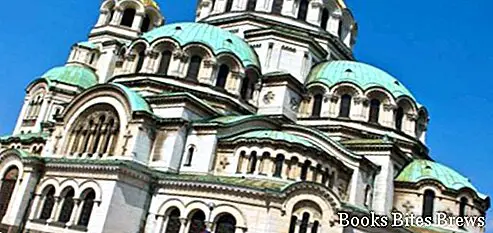What to see in Sofia, itinerary including the main monuments and places of interest, including Alexander Nevski Cathedral, Saint Sophia Church and Archaeological Museum.
Tourist information
Capital of Bulgaria, one of the oldest in Europe, Sofia is located in the western part of the country, in a wide valley at an altitude of 550 meters, at the foot of the northern slope of the Vitosa massif, reachable from the city center also via the ski lifts located in the districts of Simeonovo and Dragalevci.
Founded by the Thracians with the name of Serdica in the seventh century BC, Sofia preserves remarkable Ottoman and Orthodox religious testimonies, in the historical center, easily visited on foot, there are the majority of sites of historical and artistic interest, while in the suburb of Boyana it is located the church of the same name with its precious frescoes, considered one of the most complete and perfectly preserved monuments typical of medieval Eastern European art.
Since Sofia developed mainly from the end of the nineteenth century, the general appearance is mainly modern, with some buildings built on the Soviet model.
What see
Alexander Nevski Cathedral, built between 1882 and 1912 in a neo-Byzantine style and belonging to the Bulgarian Orthodox patriarchate, is dedicated to the brave and holy prince of Russia, who lived in the thirteenth century, to whom the central altar is dedicated.
The other two altars inside the cathedral are named after Saint Boris, the prince who brought Christianity to Bulgaria, and the other to Saints Cyril and Methodius, inventors of the Cyrillic alphabet.
The Icon Museum, located in the crypt, preserves more than 300 icons and wall frescoes that show the development of icon painting.
About 8 km southwest of Sofia, there is the Boyana Church, which constitutes one of Bulgaria's most precious treasures.
It is a small medieval cult building which, after being closed to the public for 38 years, was restored and reopened to the public in 2000.
Boyana Church is best known for its fine thirteenth-century frescoes, depicting scenes from the Bible and the lives of saints.
In the past there were 70 mosques in Sofia, but the Banya Bashi Mosque is the only one in operation.
Recommended readings- Varna (Bulgaria): what to see
- Bulgaria: useful information
- Sofia (Bulgaria): what to see
The name means many baths, in fact outside there are the remains of the hammam, which was the original Turkish bath.
It was designed in 1576 by Mimar Sinan, the greatest Ottoman architect, he also built the Sultan Selim Mosque in Edirne and the Blue Mosque in Istanbul.
The most beautiful part of the mosque is the domed ceiling, brought back to its original design after the fall of communism.
The Terme di Sofia are located in front of the mosque and were built between 1911 and 1913, in their vicinity there are the natural sources of hot mineral water, a place where the inhabitants usually go to fill their bottles with water, especially in the winter time.
The city owes its name to the Church of Santa Sofia, dating back to the sixth century and built on the site of previous buildings.
Under Ottoman rule it was converted into a mosque, the original twelfth-century frescoes were destroyed and the minaret was added.
It was later damaged by earthquakes and, after liberation, it was restored in 1878 and restored as a church.
Subsequent renovations, which began after 1900, brought the Basilica back to its ancient forms.
The Rotonda di San Giorgio is the oldest building, having been erected in the fourth century as a Roman temple.
A careful restoration has revealed three layers of exquisite medieval frescoes that decorate the dome, hidden by plaster during the five hundred years of Ottoman rule.
The Rotonda di San Giorgio is surrounded by excavations that brought to light some ruins of the Serdica from Roman times.
The Central Synagogue of Sofia is the largest Sephardic synagogue in Europe.
Designed by the Austrian architect Grunanger, the Spanish-Moorish-style building was built on the model of a Vienna synagogue, which was destroyed by the Nazis.
The Jewish History Museum, housed in a small building located behind the Central synagogue, houses a permanent exhibition concerning the history of Bulgarian Jews during the horrors of the Second World War and the extermination of six million Jews by the Nazis.
In the National Art Gallery, housed in the building that was once the residence of the Tsars, there is the largest collection of works created by Bulgarian artists, as well as numerous medieval paintings.
The National Archaeological Museum deserves to be visited if only for the particularity of the building that houses it, which is a large stone building dating back to the fifteenth century, used as a mosque in the Ottoman era.
Most of the pieces in the museum are of Thracian, Greek and Roman origin, there is also a mosaic recovered from the floor of the church of Santa Sofia.




